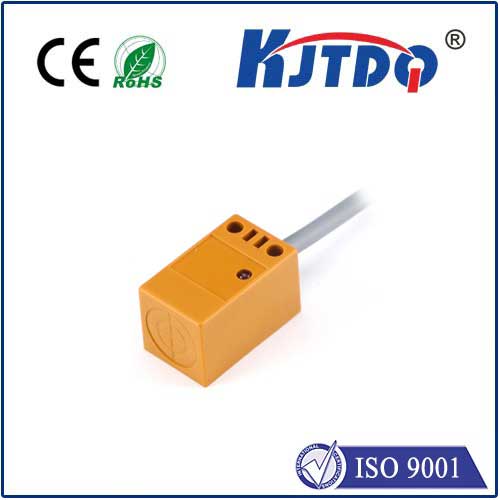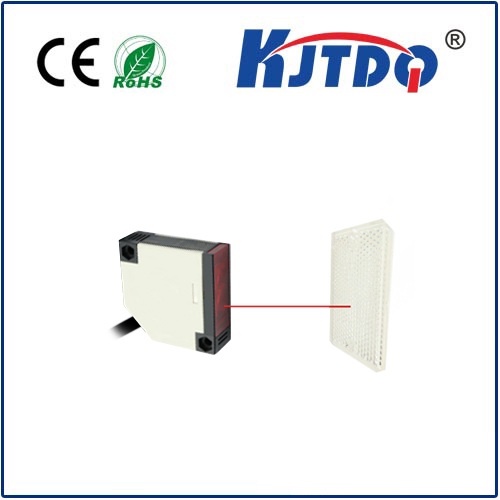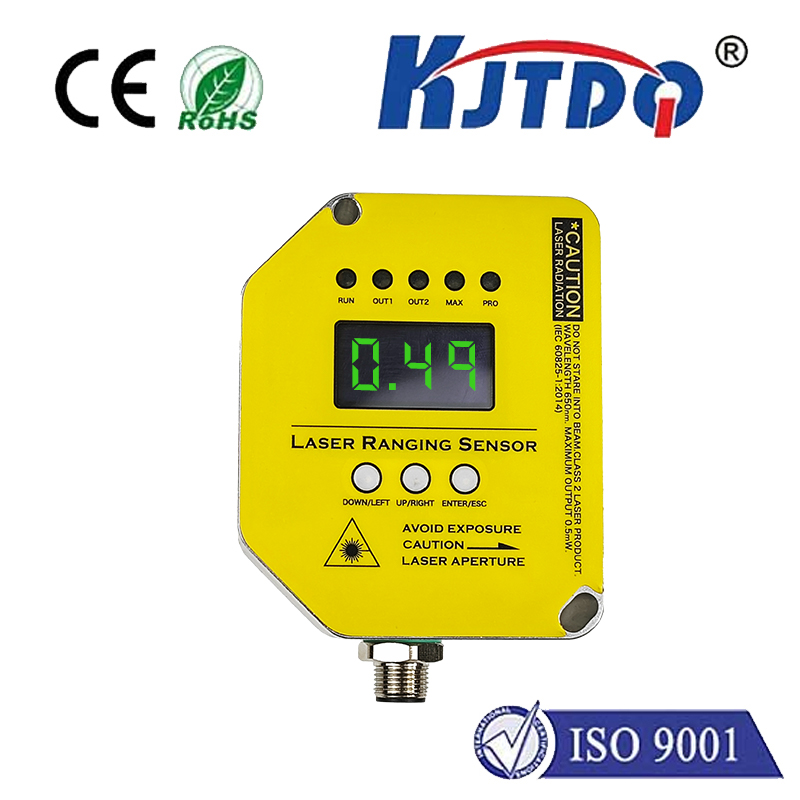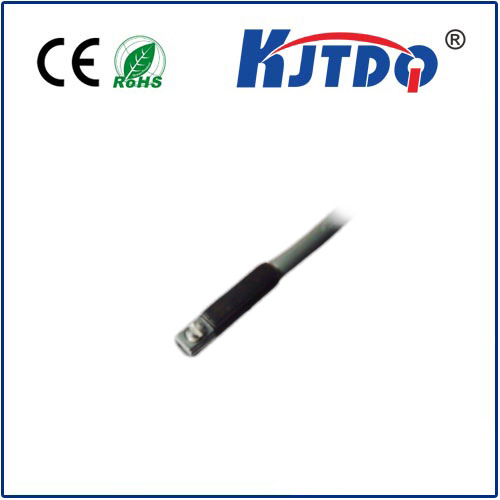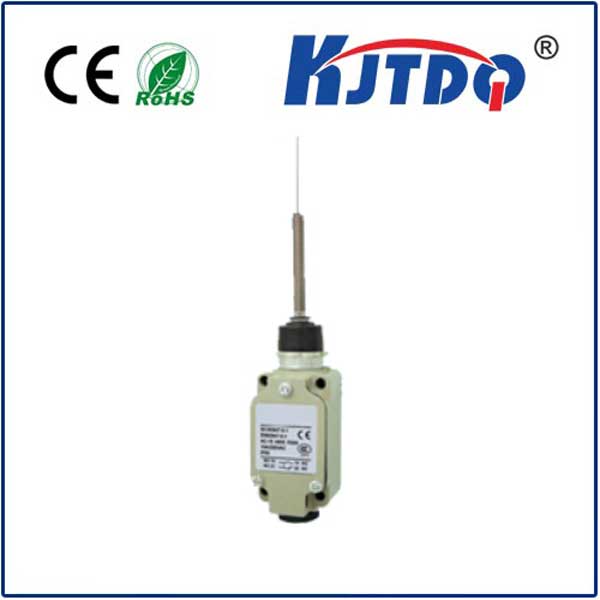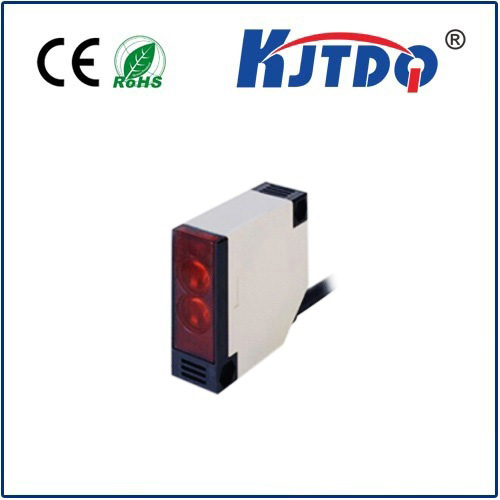proximity reflector sensor
- time:2025-09-05 15:31:35
- Нажмите:0
The Unseen Sentinel: How Proximity Reflector Sensors Power Modern Automation
Imagine walking towards a supermarket entrance, and the doors glide open effortlessly before you touch them. Or consider a manufacturing robot arm that stops millimeters before colliding with an unexpected obstacle. These aren’t acts of magic; they’re everyday feats of sophisticated sensing technology. At the heart of many such interactions lies the proximity reflector sensor, an often-overlooked component that provides crucial object detection and distance measurement with remarkable precision. Understanding how these sensors work and where they excel reveals a fundamental building block of our increasingly automated world.
Demystifying the “Reflector” Principle: Seeing Without Touching
Unlike inductive sensors detecting metallic objects or capacitive sensors sensing materials based on changes in electrical fields, the proximity reflector sensor operates on a distinct principle: light reflection. It consists of an integrated emitter and receiver housed within a single unit. Here’s the core process:
- Emission: The sensor emits a beam of energy – most commonly infrared (IR) light, though ultrasonic sound waves are also used in some variants. This beam travels outward from the sensor head.
- Reflection: When an object enters the beam’s path, the emitted energy (light or sound) strikes the object’s surface.
- Reception: A portion of this energy reflects back towards the sensor. The integrated receiver lens or element detects this returning “reflected beam.”
- Detection & Output: The sensor’s internal electronics analyze the properties of the reflected signal. If the reflected intensity exceeds a preset threshold (indicating an object is present within the detection range), the sensor triggers an output signal (e.g., switches a circuit).
The term “reflector sensor” originates from this critical dependence on the target object itself acting as the reflector. The sensor requires an object to bounce its signal back. This distinguishes it fundamentally from through-beam sensors, which rely on a separate transmitter and receiver unit positioned opposite each other; an object is detected when it interrupts the beam traveling between them. Proximity reflector sensors offer the installation simplicity of having both elements in one unit but rely on suitable reflection properties of the detected object.

Key Advantages: Where the Proximity Reflector Sensor Shines
This unique operating principle grants proximity reflector sensors several compelling advantages:
- Non-Contact Detection: Like other proximity sensors, they detect objects without physical touch, eliminating wear and tear and enabling detection of fragile or sensitive items. This is paramount in delicate assembly lines or handling food products.
- Relatively Compact Design: Combining emitter and receiver in one housing typically results in a smaller form factor compared to through-beam setups, making them ideal for space-constrained applications. Compact sensing solutions are vital in modern robotics and miniaturized equipment.
- Simplified Installation & Wiring: Only one unit needs mounting and wiring, significantly reducing installation complexity and cost compared to through-beam sensors requiring alignment of two separate components. This translates to faster setup times and lower hardware costs.
- Good Detection Range: Modern infrared reflective sensors offer surprisingly long sensing distances relative to their size, often ranging from a few centimeters up to several meters, depending on the specific model and technology (IR vs. Ultrasonic). This versatility allows them to cover various operational zones.
- Immunity to Target Material (to some extent - see challenges): Unlike inductive sensors limited to metals, proximity reflector sensors can detect a wide range of materials, including plastic, wood, cardboard, glass, and liquids – basically, any surface that reflects the emitted beam sufficiently. This is a significant advantage in diverse industrial environments. However, material properties do significantly influence performance (discussed below).
Navigating the Challenges: Material Matters and Environmental Factors
While highly versatile, proximity reflector sensors are not without limitations. Their performance is intrinsically linked to the reflective properties of the target object and the environment:
- Surface Reflectivity & Color: Dark, matte, or highly absorbent surfaces reflect significantly less light than bright, shiny, or white surfaces. This can drastically reduce the effective sensing range or even prevent detection entirely for very dark objects. Sensor performance variability based on target surface is a primary design consideration.
- Surface Angle & Texture: Highly angled or uneven surfaces may scatter the emitted beam away from the receiver, weakening the reflected signal and potentially causing unreliable detection. Consistent, relatively flat surfaces facing the sensor ensure optimal performance. Object orientation plays a key role.
- Ambient Light Interference (IR sensors): High levels of ambient infrared light (e.g., direct sunlight, strong incandescent lighting) can flood the receiver, making it difficult to distinguish the sensor’s own reflected beam. Modulated IR light (pulsed at a specific frequency) used in modern sensors helps mitigate this by allowing the receiver electronics to “tune in” to the expected signal frequency and ignore constant background IR.
- Dust, Fog, or Steam: Particles in the air (dust, mist, steam) can scatter or absorb the emitted and reflected beams, reducing signal strength and reliable detection range. Careful sensor selection for specific environmental conditions is necessary.
Modern Innovations: Sharpening the Senses
Manufacturers continually refine proximity reflector sensors to overcome their inherent challenges:
- Background Suppression (BGS): Sophisticated optics and triangulation techniques allow sensors to only detect objects within a very specific “zone” relative to the emitter. Objects beyond this defined background plane are ignored. This drastically minimizes false triggers from highly reflective walls or surfaces behind the actual target area. BGS technology is crucial for precision distance tasks like controlling automated guided vehicles (AGVs) near walls.
- Foreground Suppression (FGS): Conversely, FGS sensors are designed to ignore objects very close to the sensor face, only detecting objects beyond a set minimum distance. This prevents false detection from dust accumulation or mounting brackets.
- Modulated Light & Digital Signal Processing: As mentioned, pulsing the IR beam and using digital filters allows sensors to operate reliably even in challenging, high-ambient-light environments. Advanced signal processing significantly enhances operational stability.
- Laser Options: Laser-based proximity reflector sensors offer extremely focused beams, enabling detection of very small objects, long ranges, and precise distance measurement, often with high resistance to ambient light interference. Laser sensing brings enhanced precision to applications like robotics and quality control.
Ubiquitous Applications: Sensing the World Around Us
The practical utility of the proximity reflector sensor is immense. You encounter them constantly:
- Automatic Doors: Detecting people approaching or standing near doorways. This is perhaps the most common everyday sighting.
- Packaging & Material Handling: Counting objects on conveyors, detecting package presence at filling stations or sealing heads, controlling pallet stack height, and verifying label application. Industrial automation sensors like these keep production lines moving efficiently.
- Machine Safety: Used as part of safety light curtains or as presence detection sensors to ensure an operator’s hands are clear before a machine cycle starts.
- Automotive: Detecting obstacles during low-speed maneuvers (like parking), controlling rain-sensing wipers, and activating trunk opening mechanisms. Automotive proximity sensing enhances safety




